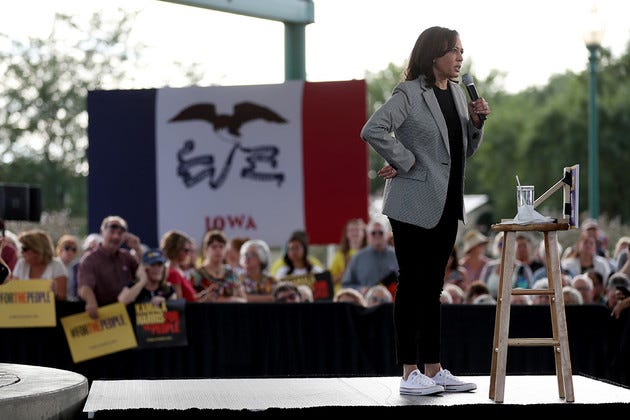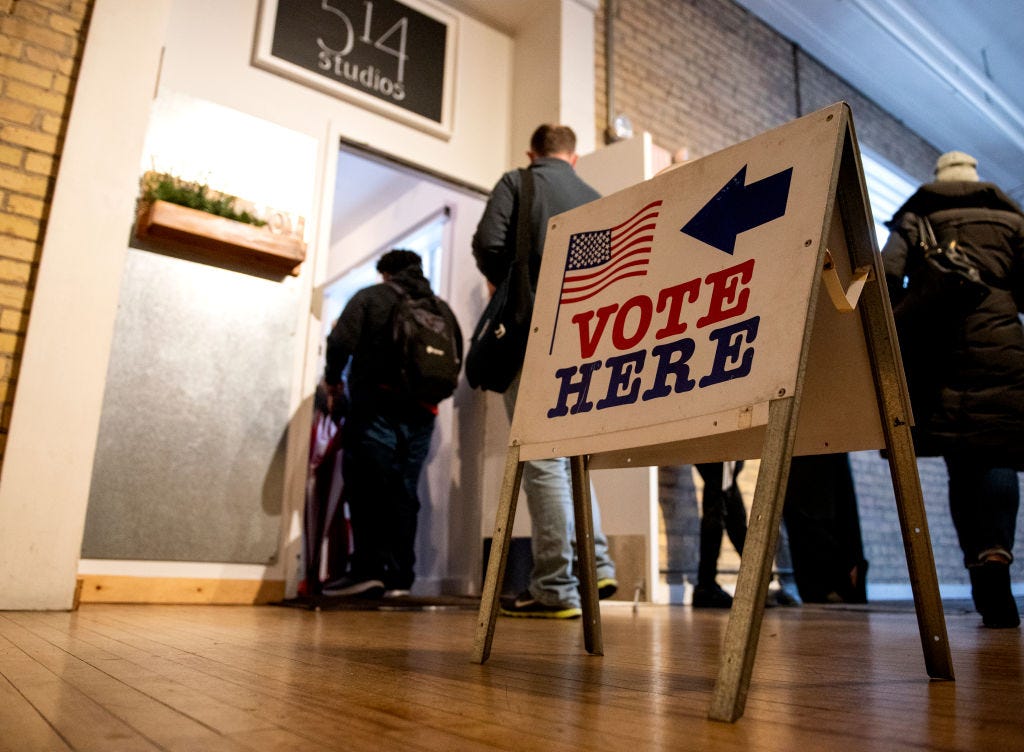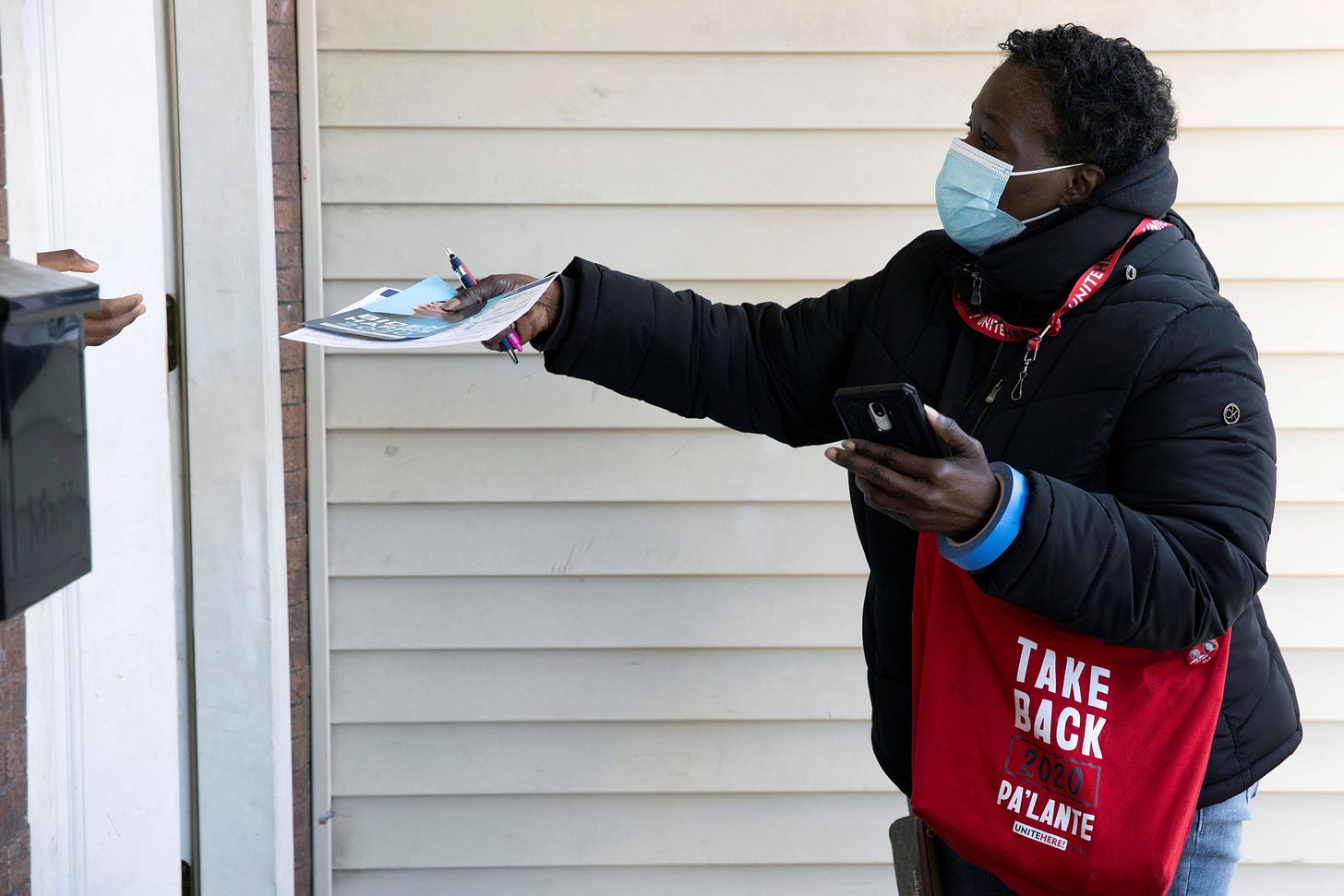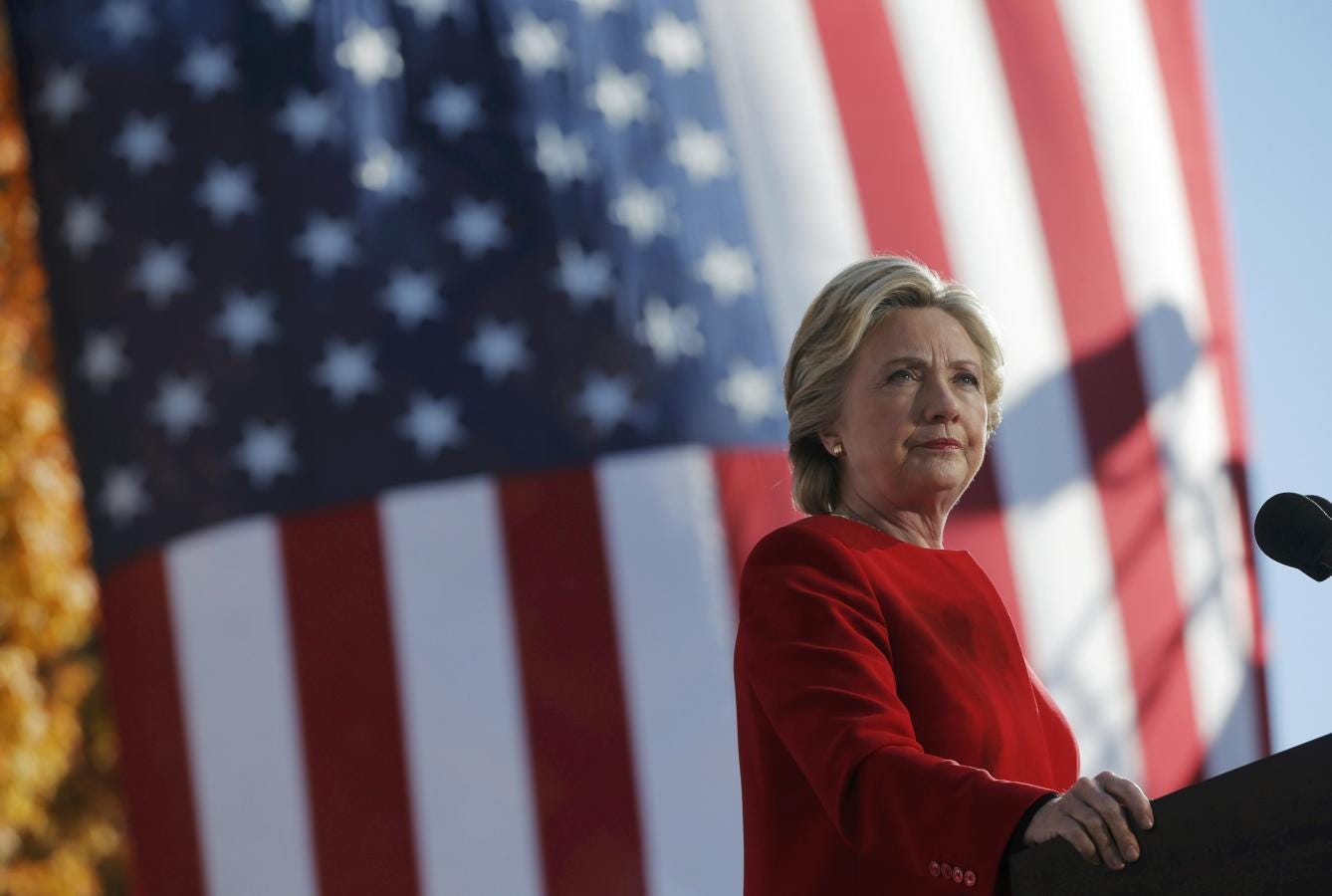Can You Trust the Polls?
Kamala Harris makes big moves in latest Iowa poll
A brand new poll out shows a major shift in support for Kamala Harris over Donald Trump in Iowa.
In June, Trump had an 18-point lead over President Biden in Iowa. Now, that lead has shrunk to just four points, with Trump at 47% and Harris at 43% among likely voters.
This is a state Trump won by nearly double digits in both 2016 and 2020.
One of the reasons behind the shift is women voters, with 53% saying they will back Harris, to just 36% for Trump. Trump wins men 59% to 32%.
Dramatically tightening polls like these can force Trump to have to spend time and money defending a state he thought might have been safe for him.
Now, I know what a lot of you will ask: how do we know this poll can be trusted?
How is polling conducted?
Back in the day (my favorite historic time period), pollsters got their information either in person (door knocking), or over the phone. Your parents and grandparents might have gotten a call to their home phone where they were asked a series of questions, like who are they voting for? What issues are most important to them?
But things got complicated when cell phones became the primary way people communicated. Cell phone numbers aren’t generally listed in the phone book, and pollsters had no real way to know if a person they called was who they said they were. When young people stopped using landlines altogether, polling the old way left out a huge portion of the country.
Today, polls are conducted by phone, online, and by mail, but the majority are done using internet surveys. When polls are conducted online, people are almost always first contacted by phone, email or mail, and invited to take the survey. For the data to be accurate, your identity must be verified.
Some polling organizations do use text messages. Most large polling firms that use texts do so in conjunction with an online survey. So the person might get the text with a link to the actual poll online.
Some of you have asked how you know if you get a call that it’s from an actual polling organization and not a scam.
You can expect to be asked some questions about your background. Things like your age, gender, education level, and your political preference. But you will never be asked to give private information like your social security number or bank account information.
Pollsters will also never try to sell you anything. You are welcome to ask them questions and if you aren’t comfortable with the answers, don’t continue.
Some of you also wonder why you’ve never been asked to participate in a poll. According to Pew Research Center, one of the largest polling organizations in the US, you have about a one in 26,000 chance of being asked to participate in one of their polls.
They draw a random sample of addresses from the US Postal Service, and ask one randomly selected adult at that address to join their survey. The only people who would not be included are those without a residential address or places where the post office doesn’t deliver mail.
You cannot volunteer to be part of polls.
Who can you trust?
Not all polls are created equal. There are polling organizations that have very high standards, and others that don’t.
Pollsters with low standards likely aren’t going to be transparent about how they conduct their polls. They might not identify the people they spoke to, like only talking to Republicans or only Democrats.
They also might not show the way questions were asked. Respondents can be easily swayed by the phrasing of a question, which would affect poll results. For example, asking “what do you think of X’s open border immigration policy” is a lot different than asking “what do you think of X’s policy on immigration?”
Even something as small as saying, “as a woman, what do you think of ABC” can lead a person to a different answer than they might have given.
Reputable pollsters take what they do very seriously. They aren’t trying to skew the results in one way or another, they are trying to be accurate. Remember: polls are meant to measure what voters are thinking at that moment in time. You cannot look at a poll today and know for sure that one candidate is going to win the election over another.
Here are some ways to find the most accurate polls:
Check how long the organization has been doing polling. The best ones will have decades of experience. All reputable polling organizations should have an about page on their website explaining their methods and how long they’ve been polling.
Who is sponsoring the poll? If the money is coming from someone with a clear political agenda on the left or the right, it’s best to move on. You can see who sponsors most major polls here. Partisan poll sponsors are highlighted with a red diamond (Republican) or a blue diamond (Democrat).
Who was polled? Registered voters? Likely voters? This makes a huge difference. Likely voters are the best way to get accurate information. It means they are registered to vote, and are probably going to do so.
Pay attention to the margin of error.
The margin of error tells you how far the information could swing in either direction. What does that mean?
Think of it this way: in scientific studies, new drugs aren’t tested on everyone with a certain medical condition, they are tested on a small group of participants. Scientists then use that data to extrapolate how *most* people will react to the medication.
In the same way, pollsters can’t possibly talk to the more than 160 million registered voters in this country. Instead, they speak with a sample size, and then use statistical analysis to reflect the broader population.
The margin of error represents how close the pollsters believe the results fall relative to the whole voting population.
So if a poll shows Harris ahead of Trump, 48% to 47%, but the margin of error is 3%, that means those numbers could swing in either direction by 3%. In this example, Harris’ numbers would fall anywhere between 45-51%, and Trump would be between 44-50%.
Most political analysts don’t consider a candidate officially ahead in a poll until their numbers are outside the margin of error.
This is why when you see a candidate up by one or two percentage points, you often hear it being referred to as a “statistical tie”, because the lead is “within the margin of error.”
Are polls reliable this time around?
Remember, polls aren’t meant to predict the outcome of an election. They don’t predict who will *actually* show up on election day. They can’t predict whether there will be a hurricane or a pandemic or other external factors that mean far more of demographic group X shows up than they polled.
And polls aren’t perfect. In 2016, polling showed Hillary Clinton was ahead of Donald Trump going into election night, and the expectation of many political analysts was that she’d win. Clearly that didn’t happen.
What went wrong with the 2016 polls? First, Clinton did win the popular vote. So in that respect, polls were correct. Second, her loss was covered by the margin of error, as I discussed above. But there is also evidence that Clinton voters might have stayed home, thinking she would win. And finally, the polls underestimated certain voters, and those voters overwhelmingly supported Donald Trump.
Polls were even worse in 2020, with 93% of national polls in the weeks before election day overstating Biden’s support by an average of 4% points. These errors were the biggest since 1980. Once again, polls did not accurately reflect voters who supported Donald Trump.
Why did that happen, and what has changed since? One major study looked at polling in 2020, and saw that fewer people participating in polls identified as Republican or leaning Republican. In 2015, 45% of participants identified this way, and in 2020 that number dropped to 38%. There also appeared to be a reluctance by Trump voters to participate in polls.
In 2022, some pollsters made adjustments. One change was asking respondents who they voted for in previous elections, which helped pollsters more accurately adjust for political preference.
They have also made changes to “weighting” certain respondents, to compensate for portions of the population that might be underrepresented in polling. In other words, if there’s a demographic (say, lower income voters), who don’t regularly participate in polls, they might multiply a respondent from that demographic by a certain number in order to give them more equal representation in the poll.
And if you’re looking for voting information, I have a new resource available to all of you! Go to SharonMcMahon.com/vote to learn about voting in your state. That includes registering to vote, checking your registration, and learning about early voting or finding your voting location. You can even sign up for reminders!
What questions can I answer for you about polling? Would you like me to interview someone who does political polling professionally?








1) It does seem like polls are really tools to be used by candidates and support/opposition groups. You can't be everywhere at once, so polling helps narrow the playing field for those in the campaign to focus their efforts. Similarly as voters who might want to join the campaign efforts, polls could indicate where to focus your donation of time or money.
But don't ever let polls discourage you from participating in the voting process. If polls are ultimately discouraging participation, then as voters we would do well to ignore the polls and just show up to vote our values. 👍 We will all know the results once the votes are cast, counted, and certified. ❤️
2) I wanted to say big thanks for launching the voter resources on your site. The night it dropped I was up for 2 hours researching my State Propositions. It's a very user friendly and inviting space (without ads ‼️).
I’d be super interested in you interviewing someone who works with polling! So appreciative of the work you do in general, too 😊